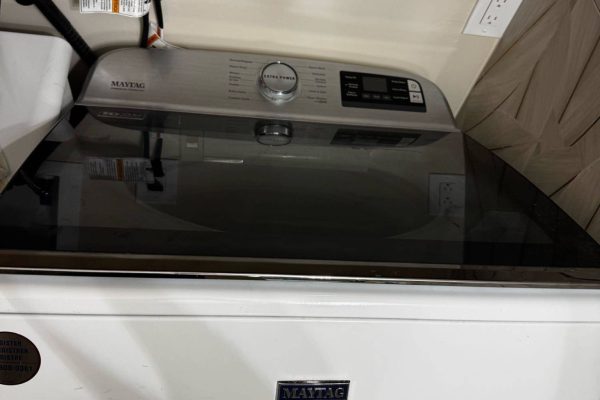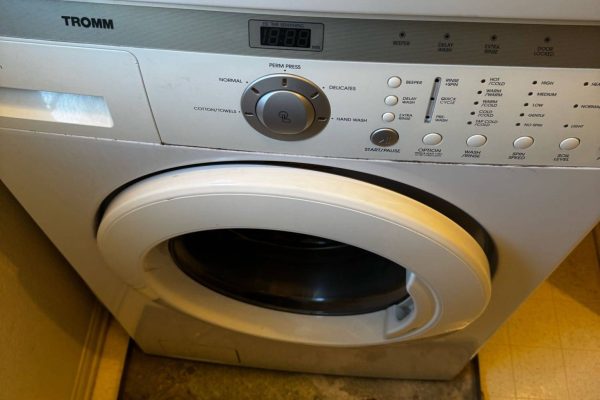A washing machine that repeatedly trips the breaker is more than just an inconvenience—it’s a sign that something is wrong, and ignoring it can lead to more serious electrical problems or even safety hazards. Understanding the potential causes and solutions can help you respond effectively and safely. Let’s explore the reasons why your washing machine might be causing your breaker to trip and what you should do in response.
Common Causes
1. Short Circuit Due to Moisture
Washing machines use a significant amount of water, and any moisture leakage into electrical components can cause a short circuit. Water may seep into the motor, wires, or control board, triggering the circuit breaker to trip as a safety measure. This is especially common in older machines or those that have suffered from recent water damage or leaks.
2. Faulty Electronics
Modern washing machines are equipped with advanced electronic controls and sensors. Over time, these components can degrade or malfunction. If an internal circuit board fails, it can draw excessive current or create an imbalance in the electrical system, causing the breaker to shut off power.
3. Damaged or Worn Wiring
Electrical wiring, like any component, can wear out over time. Loose connections, frayed insulation, or physical damage can all cause intermittent or continuous short circuits. A single exposed wire making contact with a metal part of the machine can trip the breaker as a protective response.
4. Overloaded Circuit
If your washing machine shares a circuit with other heavy appliances or devices, the cumulative electrical load might exceed what the breaker can handle. In this case, it’s not a problem with the washer itself but with the setup of your home’s electrical system.
5. Faulty Power Outlet
Sometimes the issue lies not with the washing machine but with the wall outlet it’s plugged into. A damaged or improperly wired outlet can arc, overheat, or short, causing the breaker to trip whenever the washing machine is in use.
Safe Solutions and Steps to Take
1. Unplug and Inspect
Start by unplugging the washing machine. Visually inspect the power cord for any signs of damage such as fraying, cuts, or burn marks. If you spot any damage, do not use the machine until the cord is replaced.
2. Dry Out Moisture
If you suspect that moisture might be the issue, allow the machine to dry thoroughly. Leave the machine unplugged and open the access panels or leave the door open to aid ventilation. Wait at least 24 hours before trying to run another cycle.
3. Test the Outlet
Try plugging another appliance into the same outlet to check if the problem lies in the washer or the power source. If the breaker trips again, the outlet or the circuit may be faulty. Avoid using the outlet and consult an electrician.
4. Reduce Load on the Circuit
Ensure the washing machine is the only appliance on its circuit. If it’s sharing a circuit with a dryer, iron, or other heavy-duty appliances, consider moving them to separate outlets on different breakers.
5. Inspect Circuit Breaker
A breaker that trips too easily or frequently might itself be worn out or defective. If you’ve ruled out all other causes, a qualified electrician can inspect or replace the breaker.
6. Call a Professional
Electrical issues involving washing machines are not always easy or safe to fix without experience. The most secure and effective approach is to call in a professional appliance technician or an electrician. They can diagnose hidden faults, replace worn parts, and ensure your home’s wiring is up to code.
Why You Should Act Quickly
Continually resetting a tripped breaker without addressing the root cause is dangerous. Repeated tripping can damage your washing machine’s internal components and pose a fire risk. Acting promptly ensures both your safety and the longevity of your appliance.
Professional Help from Poway Appliance Repair Service Center
At Poway Appliance Repair Service Center, we specialize in diagnosing and fixing all types of washing machine problems, including electrical issues. Our experienced technicians use modern diagnostic tools to quickly identify faults, whether they stem from internal components, faulty wiring, or moisture damage.
Don’t let a tripped breaker disrupt your laundry routine or compromise your household safety. Contact us today to schedule a fast, reliable repair service. We’ll get your washing machine back in action—and your home back to normal—in no time.
Contact us


